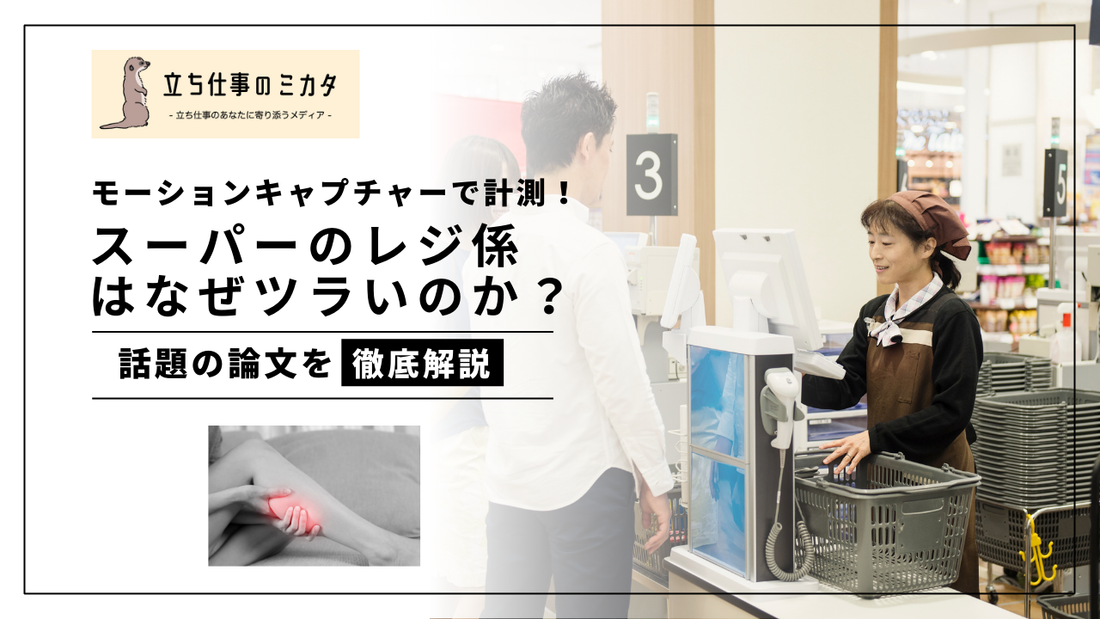
Why is working as a supermarket cashier so tough? A study on the physical strain using motion capture
Share
1. Introduction
Supermarket cashiers are one of the occupations that are prone to developing work-related musculoskeletal disorders (WMSDs) due to long hours of standing and repetitive movements. In particular, the unnatural postures they take when scanning products and working the cash register can put strain on their shoulders and lower backs. This article explains the physical strain on cashiers and ways to reduce it, based on the latest research conducted in Portugal.
2. Research Overview
This study analyzed the musculoskeletal strain of five female cashiers working in a supermarket in the north of Portugal. The participants were aged between 19 and 61 years and included workers with different heights and handedness characteristics. The study used an XSens MVN motion capture system to capture whole-body kinematic data . Furthermore, the Rapid Upper Limb Assessment (RULA) and Rapid Entire Body Assessment (REBA) assessment methods were used to quantify physical strain under different working conditions.


In the experiment, we performed 19 different microtasks (e.g., scanning items, exchanging receipts, handling cash, cleaning, etc.) and analyzed the effect of differences in the design of the cash register on the burden.

3. Factors affecting the physical strain of cashiers

3.1 Repeated Actions
The study found that cashiering puts a lot of strain on the arms and wrists, especially the frequent wrist rotations and arm lifting movements required to use the scanner, which resulted in a RULA score of 7 (immediate improvement needed).
3.2 Unnatural posture
Depending on the height of the cash register counter and the position of the products, workers often have to lean forward or twist their posture while working, which puts strain on their back and neck. In particular, the REBA score for the task of replacing receipt paper reached a maximum of 11, indicating that it is a high burden.
3.3 Handling heavy items
It was confirmed that lifting products weighing 5 kg or more (e.g., beverage bottle packs or pet food) places a large strain on the lower back and shoulders. In particular, there was no difference in strain between standing and sitting positions, and high RULA scores were recorded in both positions.
4. Measures to reduce physical strain
4.1 Improving the working environment
- Adjustable cash register height : Install height-adjustable counters to allow workers to maintain proper posture according to their height.
- Reposition the scanner : Position the scanner appropriately to minimize wrist strain.
- Sit-stand transitions : Provide appropriate seating and allow employees to switch positions freely while working.
4.2 Introduce breaks and stretches
- Regular breaks : Take short breaks at regular intervals to reduce muscle fatigue.
- Stretching exercises : Perform stretches on a daily basis to reduce strain on your shoulders and lower back.
4.3 Introducing tools to reduce the burden
- Ergonomic scanners : Lightweight, easy-to-use scanners reduce strain on your arms and wrists.
- Semi-sitting support chair : Reduces leg fatigue caused by long periods of standing at work.
- Ergonomic mat : By placing a highly cushioned mat on the floor, the strain on your feet caused by standing for long periods of time is reduced.
5. Summary
This study quantitatively analyzed the musculoskeletal strain that supermarket cashiers face on a daily basis and clarified ways to reduce it. In particular, it showed that product scanning work has a large impact on the shoulders and wrists, and that improvements to the working environment are urgently needed.
Improved counter design, proper resting and ergonomic tools can significantly reduce the risk of WMSDs, particularly by adjusting counter height, optimizing scanner positioning and providing adequate rest and stretching .
